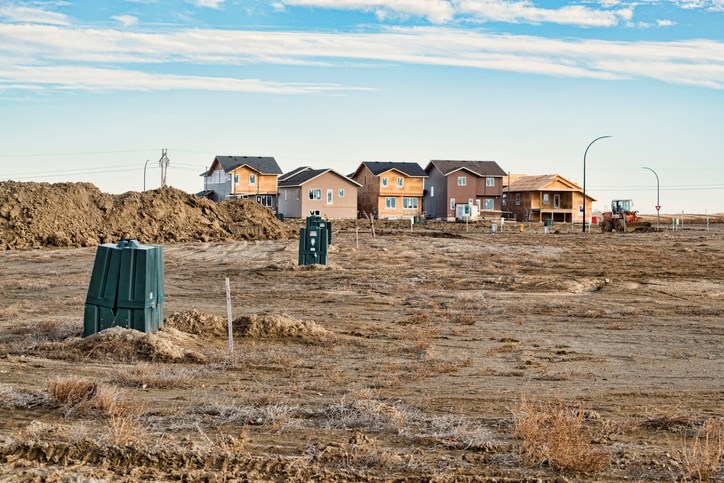Canada is losing 30,000 to 50,000 acres of agricultural land annually to urban growth, depending on whose numbers one believes.
Does that mean we need public rules that restrict farmland losses in suburban areas, effectively limiting prices for sellers and preventing speculation at farming’s expense?
Cities traditionally developed in areas with the best farming soils — places where rivers meet, near lakes with silty deltas and where food could be grown to supply local needs. Today, community growth covers that productive soil.
In some parts of the country urban sprawl is limited by provincial and municipal statute. The lower mainland of British Columbia has made some land off limits to development, reserving it for farming-only uses. Ontario has the Greenbelt around Toronto, Hamilton and other Golden Horseshoe communities, preserving farmland, wetlands and forest from being consumed as southern Ontario becomes more populous and grows its industrial base. That decision was made legislatively in 2005 and covers about three million acres, one of the largest reserves of its type on the planet.
Canada is also home to another giant protected farmland area, British Columbia’s Agricultural Land Reserve, covering about 10 million acres. That legislation has been in place since 1973 and has arms and legs in municipal and Aboriginal governments that help guide use and conversions to purposes other than farming.
It also dovetails into B.C.’s right to farm legislation, protecting farmers’ ways of life from urban protests over agricultural practices.
Quebec began its farmland protection journey in 1978 and now covers millions of acres below the 50th parallel.
In Alberta, the Edmonton area recently developed a Regional Agriculture Master Plan (RAMP) and is waiting for provincial approval. It is seen as a way to reduce farmland fragmentation from development around the six cities and three towns in the area. RAMP covers about 2.3 million acres.
This project is designed to provide for thoughtful development of the land, with an emphasis on sustainable agriculture and food processing expansion.
The Edmonton model doesn’t prohibit the sale and conversion of land for non-farming uses as strictly as Ontario, B.C. or Quebec’s rules, but it does create barriers for landowners and developers, requiring them to prove there aren’t better locations for housing or industrial projects. Unlike other agricultural land protection plans, Edmonton’s is wholly municipal, without provincial oversight, other than compliance with the Alberta Municipal Affairs department.
Protection of farmland requires more than zoning. It must be able to adapt to changes in agriculture economics and societal realities over time. The farms that are being protected must be economically viable and farming itself must have regional support. Otherwise, it will be subject to the whims of political populism.
Land use programs restrict producers’ abilities to capitalize on the value of their farms for uses other than agricultural production.
Farmers with such land might argue that they would use sale proceeds to further secure the futures of their farming activities. With financial barriers to entry as high as they are, new farmers are few and far between. Current restrictions on farmland use are largely focused on exiting families or those looking to expand or diversify.
It is encouraging that Canadian farmland preservation is being given consideration before it is transferred to new uses, but protection from loss requires more than prohibitions on urban and industrial use.
The Edmonton plan encourages building “up, not out” and aims to avoid development that merely encourages land price speculation. It is a positive step in protections that reflect the realities of agriculture.
Karen Briere, Bruce Dyck, Barb Glen and Mike Raine collaborate in the writing of Western Producer editorials.

